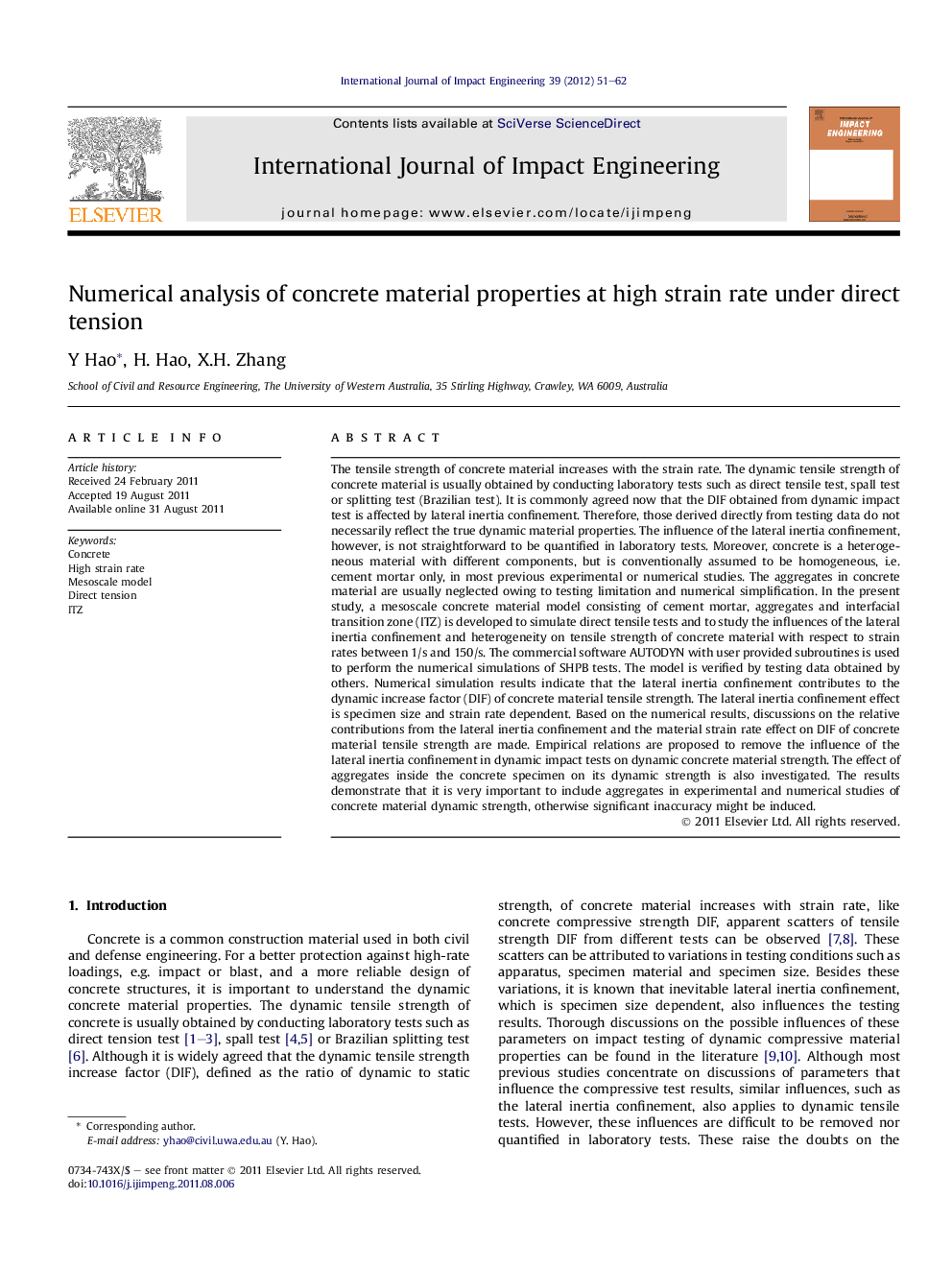| کد مقاله | کد نشریه | سال انتشار | مقاله انگلیسی | نسخه تمام متن |
|---|---|---|---|---|
| 778513 | 1464111 | 2012 | 12 صفحه PDF | دانلود رایگان |

The tensile strength of concrete material increases with the strain rate. The dynamic tensile strength of concrete material is usually obtained by conducting laboratory tests such as direct tensile test, spall test or splitting test (Brazilian test). It is commonly agreed now that the DIF obtained from dynamic impact test is affected by lateral inertia confinement. Therefore, those derived directly from testing data do not necessarily reflect the true dynamic material properties. The influence of the lateral inertia confinement, however, is not straightforward to be quantified in laboratory tests. Moreover, concrete is a heterogeneous material with different components, but is conventionally assumed to be homogeneous, i.e. cement mortar only, in most previous experimental or numerical studies. The aggregates in concrete material are usually neglected owing to testing limitation and numerical simplification. In the present study, a mesoscale concrete material model consisting of cement mortar, aggregates and interfacial transition zone (ITZ) is developed to simulate direct tensile tests and to study the influences of the lateral inertia confinement and heterogeneity on tensile strength of concrete material with respect to strain rates between 1/s and 150/s. The commercial software AUTODYN with user provided subroutines is used to perform the numerical simulations of SHPB tests. The model is verified by testing data obtained by others. Numerical simulation results indicate that the lateral inertia confinement contributes to the dynamic increase factor (DIF) of concrete material tensile strength. The lateral inertia confinement effect is specimen size and strain rate dependent. Based on the numerical results, discussions on the relative contributions from the lateral inertia confinement and the material strain rate effect on DIF of concrete material tensile strength are made. Empirical relations are proposed to remove the influence of the lateral inertia confinement in dynamic impact tests on dynamic concrete material strength. The effect of aggregates inside the concrete specimen on its dynamic strength is also investigated. The results demonstrate that it is very important to include aggregates in experimental and numerical studies of concrete material dynamic strength, otherwise significant inaccuracy might be induced.
Journal: International Journal of Impact Engineering - Volume 39, Issue 1, January 2012, Pages 51–62